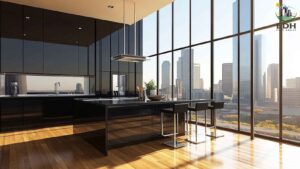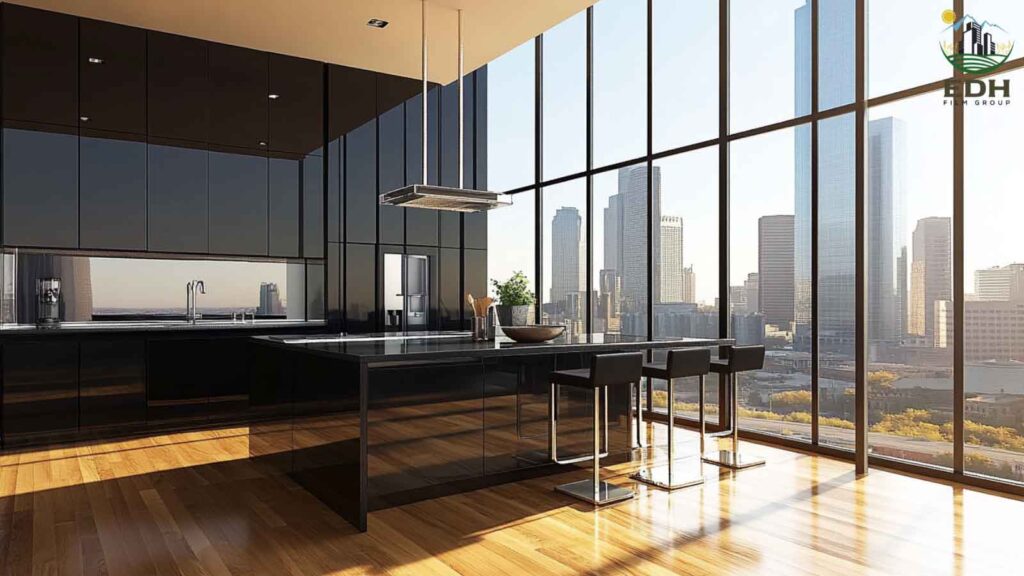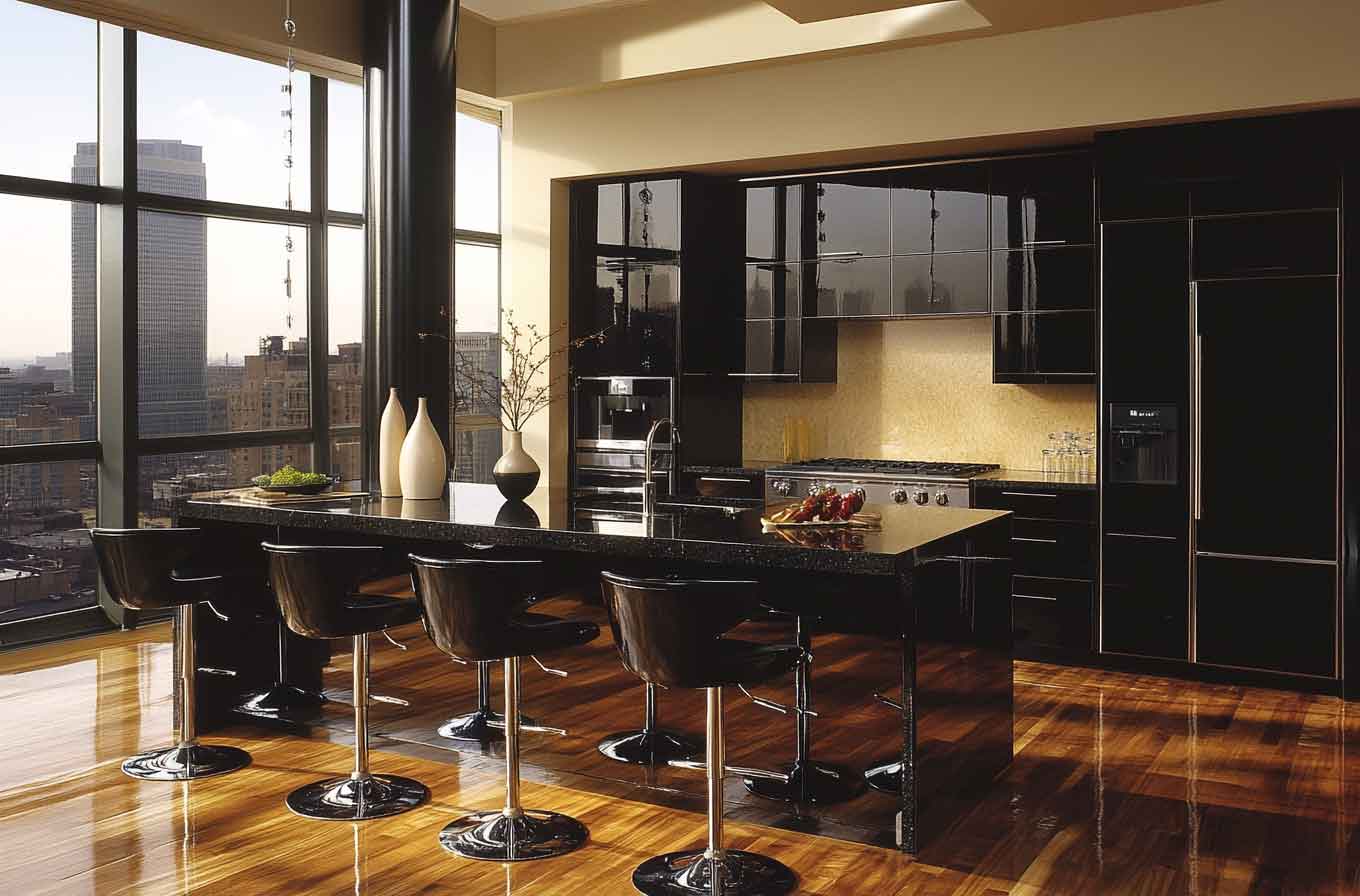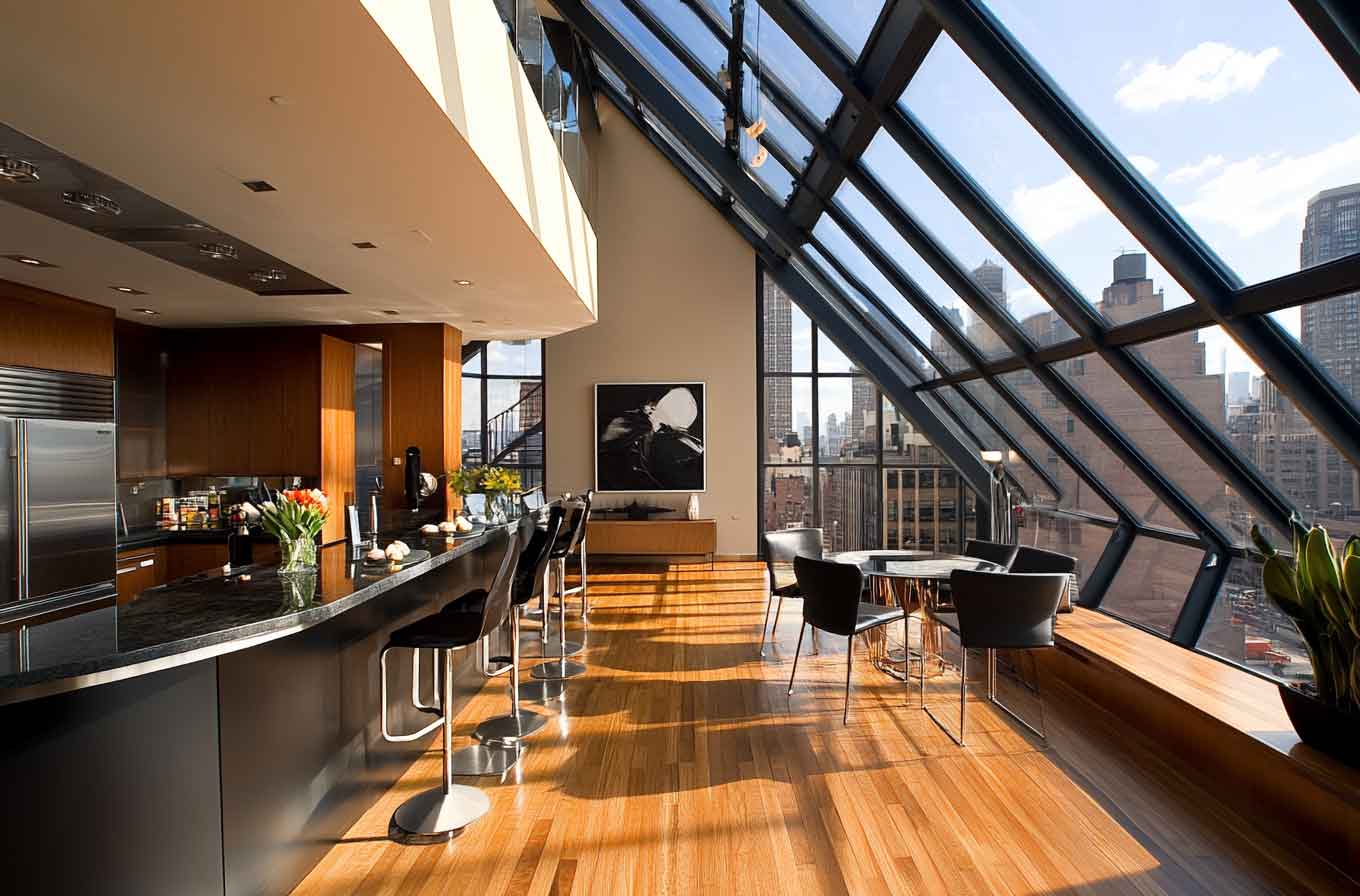Window tinting films are thin layers of polyester or composite materials applied to the surface of the glass to modify its appearance and performance. These films are commonly used in residential, commercial and institutional buildings to solve practical issues such as heat buildup, UV exposure, privacy, glare and even glass breakage. What began as a simple method for solar control has developed into a versatile category of high-performance architectural solutions.
Different types of films serve various purposes. Some reflect or absorb sunlight to improve the indoor climate. Others add a decorative element or reinforce glass to withstand forced entry or impact. The key is understanding which type of film aligns with your space’s goals, whether that’s improving comfort, increasing safety or elevating aesthetics.
This article outlines the most widely used types of window tinting films and explains their specific functions, helping you make a more informed decision based on your building’s needs.
Solar Window Films for Heat Reduction
Excess heat buildup from sun exposure is one of the most common challenges in buildings with significant glass coverage. In regions like Texas and Oklahoma, where daylight hours are long and solar intensity is high for much of the year, indoor environments can become uncomfortable, unevenly cooled and expensive to manage. HVAC systems work harder, furnishings deteriorate more quickly and occupants often resort to blinds or blackout curtains to stay comfortable. Solar window film is designed to block this heat before it enters the interior, making it a reliable solution for energy-conscious building owners and homeowners.
What Benefits Do Solar Window Films Provide?
Solar window film serves multiple functions beyond heat rejection. It filters sunlight, blocks up to 99% of UV rays and rejects as much as 78% of solar heat, depending on the film type. This reduces HVAC strain, creates more consistent indoor temperatures and lowers energy bills throughout the year.
For residential window tinting, these films allow homeowners to enjoy natural light while keeping their spaces cooler. They also help preserve interiors by slowing the fading of hardwood flooring, furniture and fabrics caused by UV exposure.
Unlike older films that rely on dark tints or shiny coatings, advanced options like 3M™ Prestige Series use multi-layer optical technology to block heat without sacrificing clarity. Rooms remain bright and visually open without becoming overheated.
How Do Solar Films Improve Indoor Comfort?
Solar films create a more balanced and comfortable environment by eliminating hot spots and reducing temperature fluctuations across rooms. Solar heat gain can make certain areas uncomfortable during peak sunlight hours in spaces with large south- or west-facing windows. These films manage that exposure while keeping the view unobstructed and the glass appearance neutral.
In homes, this means living rooms, kitchens and bedrooms stay usable and comfortable throughout the day. In commercial buildings, solar films support workplace comfort, reduce cooling loads and help meet sustainability benchmarks.
Decorative Films for Privacy and Style
Decorative window films do more than enhance visual appeal. They bring function and flexibility to any glass surface. From upscale homes to modern offices, these films are used to create privacy, define space and add design continuity without the cost or disruption of glass replacement. Their versatility makes them suitable for a wide range of environments where both transparency and discretion are needed.
What Are the Uses for Decorative Window Films?
In commercial settings, decorative films are often applied to glass conference rooms, private offices, healthcare partitions or retail storefronts where branding and privacy must coexist. These films help organizations maintain openness while meeting visual confidentiality needs, such as obscuring lines of sight in boardrooms or separating public-facing areas from employee workspaces.
In residential properties, these films are commonly used in bathrooms, front-door sidelights, kitchens and interior glass doors to introduce privacy without sacrificing light. They also help homeowners personalize spaces with subtle textures or bold patterns without the need for structural alterations.
Whether applied in homes or workplaces, decorative films deliver a flexible, non-permanent solution that installs cleanly and removes without damage, making them ideal for leased spaces and evolving design requirements.
How Do 3M™ FASARA™ Films Enhance Design?
3M™ FASARA™ films bring architectural-grade detail to interior glass with more than 100 textured, geometric and nature-inspired designs. They emulate the look of etched, cut or sandblasted glass at a fraction of the cost, offering both elegance and efficiency.
Used in corporate offices, hotels, educational institutions and residential interiors alike, these films allow for enhanced privacy while still welcoming natural light. They are also effective for spatial zoning and visual branding, making them an asset for design-conscious environments where glass is a prominent material.
From subtle diffusion to statement-making patterns, 3M™ FASARA™ films provide lasting visual impact without the permanence of etched or frosted glass.
Security Films for Impact Protection
Security window films are engineered to enhance glass safety in both homes and commercial buildings. They add a protective layer to windows and glass doors, reducing the risk of injury, intrusion and property damage during unexpected events. From attempted break-ins to natural disasters, these films help maintain structural integrity when glass is compromised.
How Do Safety Films Protect Your Property?
When glass breaks, it poses immediate risks. Flying shards can cause serious injuries and broken windows can provide easy access to intruders. Security films help prevent this by holding glass fragments in place upon impact. Whether caused by forced entry, storm debris or accidents, the film keeps the window intact long enough to delay unauthorized access or minimize hazard exposure.
In residential applications, home window security film is ideal for patio doors, ground-level windows and other points of vulnerability. It works invisibly to protect occupants without changing the appearance of the home.
In commercial settings, security film is critical in protecting storefronts, offices and public buildings. By slowing down intrusion attempts, it helps deter smash-and-grab theft and buys crucial time for response in emergencies.
What Makes Security Window Films Effective?
Film performance depends on several key factors: thickness, elasticity and the strength of the adhesive. Thicker films with high tear resistance offer more durability under impact. When combined with anchoring systems like the 3M™ Impact Protection Attachment System, the film is bonded to the window frame, creating a stronger barrier against intrusion or blast force.
These advanced features make security window film a trusted option not only for homes and retail spaces but also for high-risk environments like schools, healthcare facilities and government buildings. For any location where glass could be a weak point, security film is a simple but powerful upgrade.
Specialty Films for Unique Needs
Some spaces require more than heat or privacy control. Specialty window films serve distinct purposes, whether the goal is protecting wildlife or enhancing safety in high-risk areas.
What Is Bird Safety Film Used for?
Bird collisions with glass are a widespread issue for properties with reflective or transparent facades. These incidents harm wildlife and pose legal and reputational risks to property owners. Bird safety film is a specialized architectural window film designed to interrupt the illusion of open sky or vegetation reflected on glass. Incorporating visible dot or line patterns, usually adhering to the proven 2×4 spacing rule, alerts birds mid-flight and helps prevent impact without blocking views from inside.
Installed on the exterior surface, bird deterrent film is weather-resistant, long-lasting and often qualifies for LEED bird-friendly building credits. It is especially beneficial for structures near parks, preserves, migratory routes or campuses with expansive glass. This specialty film provides an effective, low-maintenance solution for residential and commercial buildings that supports environmental stewardship while maintaining architectural transparency.
Ballistic Film for School Windows
The ballistic-resistant film is designed for high-threat environments with insufficient standard security window film. While it does not make glass bulletproof, it significantly delays forced entry, absorbs blast energy and holds shattered glass in place. This gives occupants critical response time during active threats or emergencies. These multi-layered films are engineered to perform under extreme stress and are often combined with perimeter anchoring systems to reinforce the entire window assembly.
In schools, government buildings and courthouses, ballistic film is commonly applied to entry doors, lobby glass and classroom sidelights, the most vulnerable access points. It is tested to meet forced-entry and blast mitigation standards such as ASTM F1233. As part of a layered security strategy, ballistic window film helps mitigate violence-related risks, complements existing safety protocols and supports a secure environment for students, staff and the public.
Legal Restrictions on Tinting
Regulations vary by city and state and may limit window film’s allowable reflectivity, darkness or appearance, particularly for commercial storefronts or buildings in historic zones. While these restrictions are less common for home window tinting, some municipalities still impose limits on the type or percentage of tint used, especially for front-facing windows visible from the street.
EDH Film Group operates across Texas, Oklahoma, Missouri and Illinois, including in cities like Dallas, Fort Worth, Oklahoma City, Tulsa, St. Louis and Chicago. We stay up to date with local and state code requirements to ensure every project is compliant from start to finish. Whether you’re installing solar film for home windows or applying architectural window film to a commercial property, we tailor each recommendation to your local jurisdiction and specific use case.
Contact EDH Film Group Today for a Complimentary Estimate
When it comes to window tinting, EDH Film Group is a trusted partner for property owners seeking performance, durability and code-compliant solutions. With over 75 years of combined industry experience, we support homeowners, business operators, contractors and facility managers across Texas, Oklahoma, Missouri and Illinois with professional film installations tailored to specific goals.
Our services include residential window tinting, commercial window tinting, security window film for added protection, decorative window film to enhance privacy and aesthetics and specialized options like bird safety film and ballistic film for school windows. Every project is handled precisely, backed by 3M™-certified expertise and aligned with local regulations.
If you’re ready to improve energy efficiency, reinforce safety or elevate your building’s design, contact EDH Film Group today for a complimentary estimate. Our team will help you choose the right solution, installed with care and built to perform.





